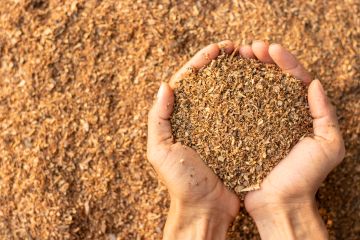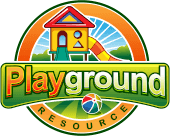Sandboxes with a lot of sand are pretty common, since it is cheap to buy if needed, as well as convenient to store at home. Sand is inexpensive, easy to get, convenient, durable, clean, safe, durable, easy to use, etc., so it may cause parents to spend a lot of time trying to determine which sandbox alternative to use. Sand can easily become trapped in shoes or pockets in order to find a sandbox that is suitable for children. Sand can be contaminated by silica in the form of dangerous crystals that are able to cause asthma or other respiratory problems if exposed for a long time. Sand can make kids look dirty by attracting animals, because animals use it as a place to urinate.
Playing with sand is also able to improve the sensory skills of children at their age. This is of course necessary with parental supervision so that it does not cause harm, such as getting into the eyes, nose, or mouth of the little one. The selection of the type of sand also determines whether the sand is good for children to play with or not.
Fortunately, kids will enjoy playing in different types of sandboxes made from different materials. Here is a list of the ones with the most benefits.
Table of Contents
Pea Gravel
Pea Gravel from a local farm can be used as a cheaper alternative for filling a sandbox if there is no sand to fill it. Pea Gravel is pretty cheap, it costs about $5 for a 50-pound bag of pea rock. If the sandbox has a lot of pea gravel, a bulk supplier may be able to save money by buying in bulk.
It is very dangerous for children to play in crushed pea gravel because it can cause them to become choking hazards. There is no easy way for kids to build sand castles with pea gravel, since sand is much more expensive than pea gravel. Children will enjoy digging in pea gravel if the bottom is level.
Pros:
- Low-cost and easily accessible
- Silica dust is not present.
- Excellent for motor skill development.
- It is less difficult to clean than sand.
- Sand is less likely to be tracked everywhere.
Cons
- Can make sand castles.
- No eagle feathers.
- It may contain lots of sharp edges.
- May be full of dust.
- Choke hazards are dangerous to children.
Crumb Rubber/Rubber Mulch
This product is exactly what it sounds like: shredded rubber, which is commonly derived from discarded tires. It is commonly used to absorb shocks that kids may experience when playing on playgrounds, which is more effective at protecting children against falling over compared to sand or gravel.
Some parents may object to their children playing in shredded tires, which is understandable. These small pieces of rubber can be a choking hazard, and certain kinds may leave your children with small black crumbs on their skin. However, this is an environmentally good solution because it keeps used tires out of landfills, does not attract animals, drains well, and is quite resistant to mildew and bacteria.
Pros
- Creates a choking hazard
- Some brands may leave a residue.
- On hot days, some people complain about a chemical odor.
- One of the more expensive alternatives
Cons
- It is made from 100% eco-friendly rubber.
- Fun, spring-like texture that kids like.
- It is durable, soft, safe, reusable, low maintenance, inexpensive, environmentally friendly, durable, safe, reusable.
- Does not easily become dirty.
- Resists stains from molds, bacteria, fungi, etc.
Engineered Wood Fiber

Third on our list is engineered wood grain. Engineered Wood Fiber, or EWF, is a non-toxic surface produced from small bits of recycled wood. EWF varies from wood chips in that it is frequently produced from within the tree, which means it has no bark, twigs, or leaves.
It’s normally soft, yet with enough texture to keep your kids entertained in the sandbox. Furthermore, if purchased from a reputable supplier, it is responsibly sourced, making it suitable for ecologically aware parents. Of course, this isn’t sand, and you can’t build sandcastles out of it. However, with a few toys and a little imagination, your children can have hours of fun outside.
Pros
- Looks wonderful.
- Lovely in all shapes, sizes, colors, etc.
- Sustainably sourced (depending on the company).
- Will not easily be retracted from one place to another.
Cons
- Have a potential choking hazard
- Some products include potentially dangerous substances.
- Can be used to conceal insects and strange things.
- Can’t build sandcastles
- Costs more than sand, pea gravel, and wood chips.
Wood Chips
Wood chips are not the same as engineered wood fiber, but they can be used in your outdoor sandbox. Typically, wood chips are used for landscaping or to cushion falls around playground equipment. Nothing, however, precludes you from using the sandbox.
In the garden, children can easily find a wide variety of different kinds of chips. It is not like playing with sand or pea gravel; it is not porous. It is easy to find wooden chips in the garage. Kids can pick them up to look at the various chips that are in the house.
Wood chips, on the other hand, disintegrate quickly. And because they’re so light (typically composed of tree bark), they may be readily tossed around or picked up by the wind. The wood chips can get pretty untidy as they decompose. They can also mold if they get moist. Insects and animals may be drawn to them as well.
Pros
- Inexpensive
- Still enjoyable for children
- It seems natural In the yard.
Cons
- Severe choking hazard
- It degrades quickly.
- When damp, it can get nasty and moldy.
- Animals and insects may be drawn to it.
Play Pellets
Children’s Factory plastic pellets are an extremely popular way to substitute sand for kids. Children’s Factory pellets are constructed of non-toxic, safe polypropylene plastic. The toys come in two colors: a light gray color, or a brown color, like sand.
The smaller size is similar to a pebble or even a big sand bucket. Even though the size of them looks similar to sand, the play pellet feels as though it is truly sand. Play pellets feel like sand, so kids can play with them in the same way that sand does. Playing with plastic pellets that kids can put in the air can keep them busy for hours.
The Kidfetti play pellets float in water, making them ideal for use alone or in conjunction with water in water tables. They’re also simple to keep clean with a broom and dustpan. They are hypoallergenic and reusable. And, unlike sand, you won’t have to worry about mold or mildew if you use them in the backyard sandbox.
Pros
- Hypoallergenic and non-toxic
- Similar to sand texture
- Simple to clean
- Mold and mildew resistance
- Float in the water for more pleasure.
Cons
- Choke hazards.
- Can not make a sandcastle with these.
- Expensive
Uncooked Food
As an alternative to sand in the sand box, many individuals use items boiled in hot water, such as hard rice. Raw rice provides the ideal atmosphere for children to experiment with their senses. The small grains of hard rice can be moved and played with in the same manner that sand can.
The uncooked, hard maize is supplied in large bags and is frequently utilized as a source of food for deer, raccoons, squirrels, various birds, and other animals. It can be dusty, but you don’t have to worry about that (unless your child has allergies or respiratory asthma).
Raw beans, like raw maize, can keep you entertained for hours. Filling a sand box with nuts isn’t the most practical approach, but it’s something to think about for a little temporary sand box or water table.
The majority of children dislike mushy oatmeal. You’d be surprised how much fun kids can have with some uncooked oats. Furthermore, it is not the most cost-effective alternative for huge sandboxes.
Packing Peanuts
These fun packing peanut things for kids are a real hit. Some companies say that their packaging is no longer recyclable, while others say that if there are enough plastic packing peanuts in the house, it can make an excellent replacement for sand.
They do, however, have some significant downsides, particularly if used outside. Because they are so light, they can easily blow around the yard. Furthermore, the entire non-biodegradable issue isn’t ideal. However, bringing them indoors for sensory play can be a terrific idea.
Just bear in mind that they are a choking hazard. And when they are ripped apart, which is unavoidable, the styrofoam fragments can be a hassle to clean up. Still, if you don’t have anything else, using them on a water table is an excellent idea.
Pros
- Probably you have some of these.
- It is unlikely that any of them will mold if put near water.
- Kids just love to play with them.
- There are a few different colors for them.
Cons
- Have a potential choking hazard
- When split apart, it’s a shambles.
- Can blow about the yard

